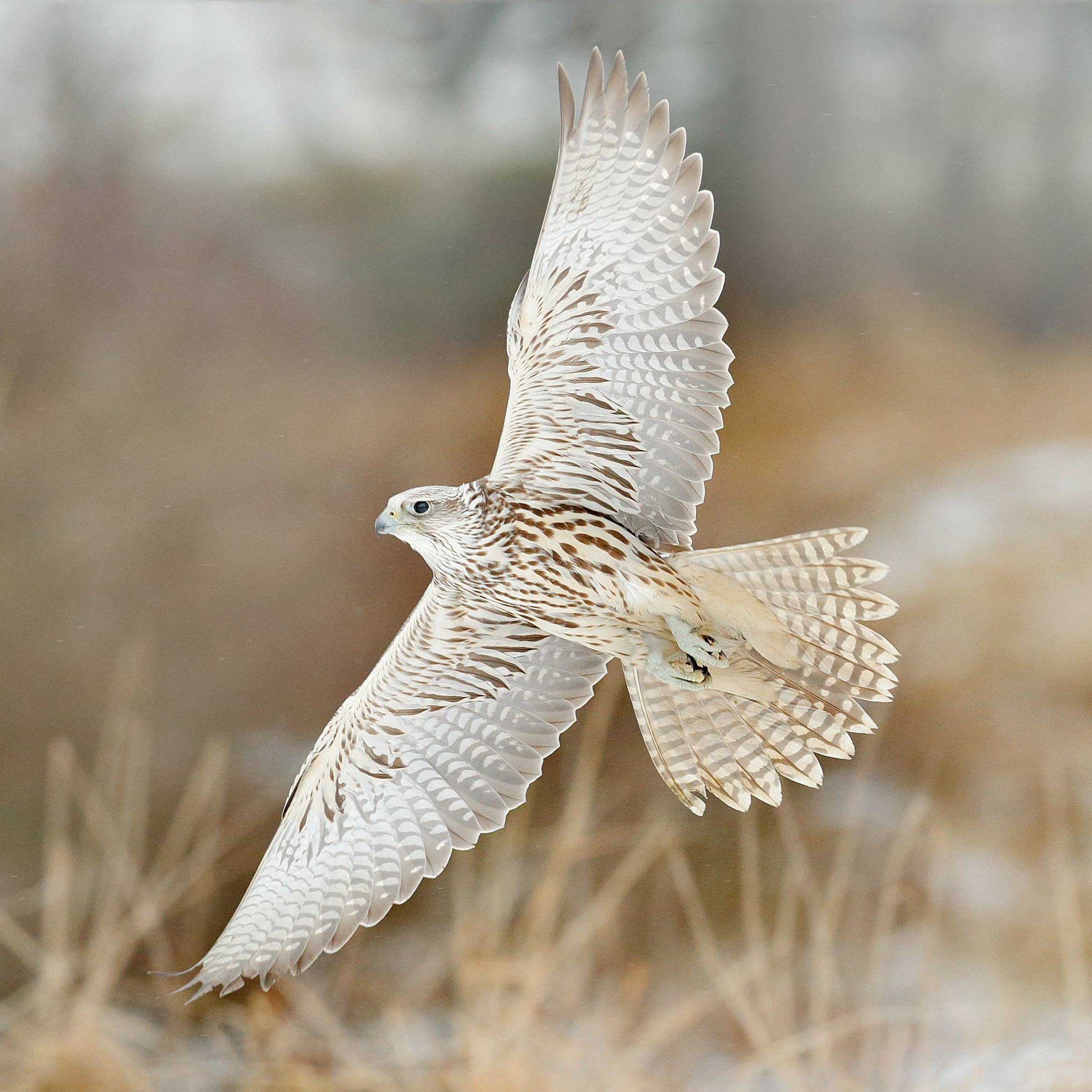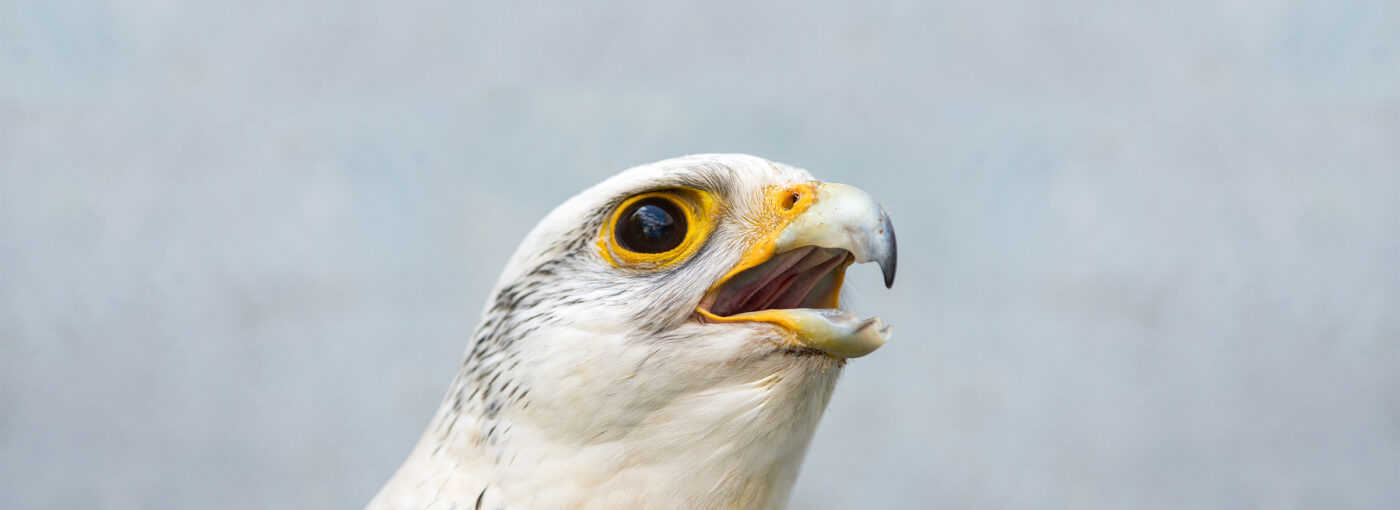Gyrfalcon, falco rusticolus, Adobe Stock, by Tatiana
Kicking Off Raptor Month
The Gyrfalcon
By Eesa Lynn
Rarely seen, due to their arctic and alpine tundra habitat; The gyrfalcon boasts the title of the world’s largest falcon. Hopeful birdwatchers and wildlife photographers may sometimes mistake the smaller but similar-looking peregrine falcon for its robust relative. Occasionally, and only in the winter, they will travel south and can be spied near the Canadian border.
These majestic birds dwell high up on the coastal cliffs and the rocky outcroppings of arctic barren grounds. Gyrfalcons do not build their own nests and as such, will rely upon naturally worn depressions lined with grass and vegetation or occupy the abandoned nests of other birds. Gyrfalcons have even been known to inhabit sea ice for long stretches during the winter months.
As obligate carnivores, gyrfalcons feed primarily on other birds such as Ptarmigans, songbirds, and waterfowl.
With the ability to reach speeds of up to 100mph during high-speed dives; they will sometimes snatch these birds from the air mid-flight.
These fierce hunters will also prey upon small mammals and rodents and occasionally fish.

Gyrfalcon Bird of Prey, Adobe Stock, by Ondrej Prosicky
Status
Last assessed by the IUCN in 2021; the gyrfalcon was classified as a species of least concern. While the population may not be at risk currently, concern does loom over the possibility of habitat loss due to global warming and the melting of arctic ice.
– – –

Bringing you breaking news and informative media with local, regional, national, and world news coverage. Topics include nature, industry, manufacturing, and all things related to the environment.


